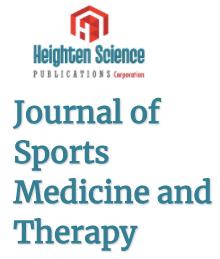Identifying concussion and initiating removal from play is challenging for even the most diligent youth sports organizations. Empowering parents to implement removal from play protocols and sideline testing may be the most practical plan at community levels to protect young athletes. We developed paradigms for community-based youth sports teams that incorporated both standard concussion protocols and research investigations. The research studies were designed to determine how sideline tests of vision, cognition and balance augment the capacity for parents and other responsible adults to identify youth athletes with concussion in ice hockey, football, lacrosse and cheerleading. Research-based sideline tests were performed at pre-season baseline sessions and during the season at the time of injury or as soon as symptoms were recognized by trained volunteer parent team testers. The combination of standard concussion protocols and research studies were performed for 510 athletes, aged 5-17 years, over 2.5 years through 5 athletic seasons. To implement the protocols and studies, approximately 80 student volunteers and parents were educated and trained on early concussion recognition and on baseline and sideline test administration. Over 80% of parent-identified head injuries were physician-confirmed concussions. Of the sideline tests performed, over two-thirds were administered within 24 hours of injury; the rest were performed within an average of 2.6 days post-injury since some athletes had delayed development of symptoms. Removal from play guidelines and standard concussion evaluation protocols were maintained in the context of the sideline testing research investigations. Based on this observational study, parents of youth athletes can be successfully empowered to perform rapid sideline tests in the context of existing concussion protocols. Implementation of objective testing may improve concussion identification and shift the culture of advocacy and responsibility towards parent groups to promote safety of young athletes. Ongoing investigations will further examine the impact of these programs on concussion management in youth sports.
Summary Points:
- The Advanced Concussion Recognition (ACR) Initiative was designed and conducted to be integrated into the real-world environment of youth sports organizations, which necessarily incorporate parents, coaches and student volunteers. Research-based baseline and sideline tests included rapid number naming (King-Devick test), the Symptom Evaluation from the Sport Concussion Assessment Tool, 3rd Edition (SCAT3, for athletes 13 years and older) or Child-SCAT3 (for children 5-12 years old) and the timed tandem gait test.
- Parents, coaches and athletes were encouraged, as part of the ACR initiative and by the standard concussion protocols, to identify any head injury and to initiate testing even if the injury was minor.
- 83% (n=62) of 75 reported head injuries identified by parents were physician-confirmed concussions.
- The Advanced Concussion Recognition (ACR) Initiative educates parents to recognize the signs and symptoms of concussion, provides guidelines to remove an athlete from play, trains them to perform simple concussion screening tests, and institutes the basic first aid of concussion (i.e. rest) until an athlete can be evaluated by a healthcare provider.
- Parents are capable of learning and recognizing the signs and symptoms of concussion when provided with effective educational materials and instructions for implementing this knowledge.
- Parents can be feasibly empowered to perform standardized, age-appropriate rapid sideline tests of vision, balance, cognition and symptoms.

